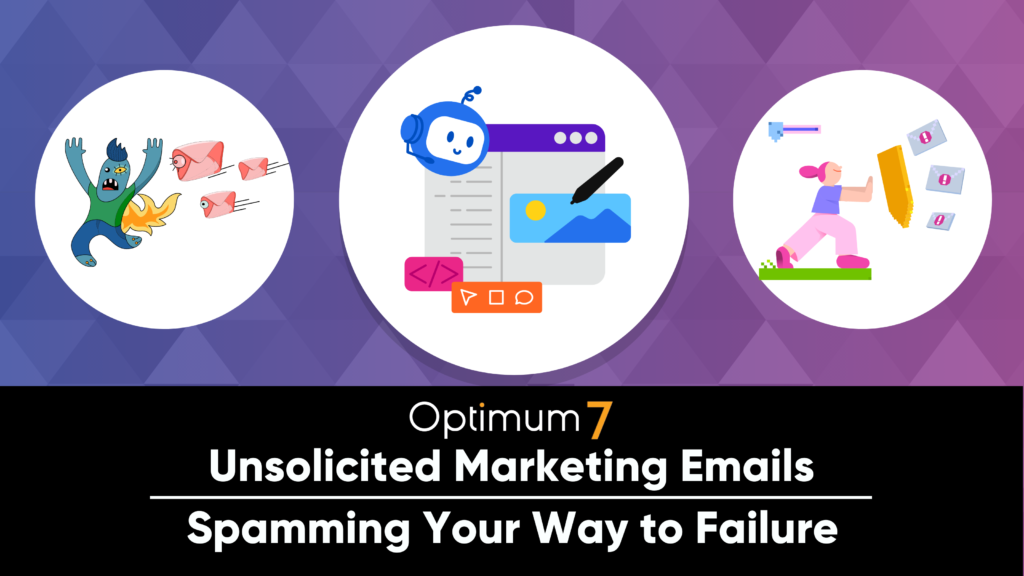Killing off a marketing campaign never feels good. All those countless hours spent creating and optimizing a marketing campaign that — no matter what you tried — just didn’t deliver tangible results. After all the time and money invested, the effort you put in feels like a waste, and chances are it’s costing you or your client money.
It’s probably time to kill it.
We’ve seen it time and time again. Novice and experienced marketers alike let new campaigns go on for far longer than they should — even after results are past due and they’ve got nothing to show for it.
It’s no surprise that this happens, though. When dealing with clients, it’s always hard to break the news that you’re switching gears on a strategy that hasn’t worked. Although your client(s) may be a little peeved at first, hopefully they’ll come to appreciate your honesty and integrity. It’s critical to be proactive about telling clients what they need to know, showing that you’re concerned about saving them money when a new campaign or initiative just isn’t working out.
Keep in mind that marketing isn’t a one-size fits all deal. It requires a tailored approach with plenty of trial and error until you find what works and what doesn’t.
Here’s are some things you can do to help you make the critical decision of whether it’s time to cut your losses and move forward with new ideas:
Planning Ahead
Let’s set the stage: you’re excited about executing a new strategy or idea for a client. You’re running through the planning and setup and can’t wait to make it live so you can update them about how awesomely it’s performing. I mean, business will skyrocket!
But, whoa! Just one second.
I get it. There’s a lot of excitement in the air. But in the world of marketing, that doesn’t guarantee success. Take a step back and consider the possibility of the new campaign not working out before starting it so you can plan accordingly.
The idea is to set specific performance targets and goals. Decide at what statistical and timely point you’ll stop the campaign if your goals aren’t being met — and stick to it!
Schedule regular review dates to analyze your new strategy’s performance as part of your planning. By incorporating these performance reviews from the start, you’ll be able to consistently determine whether a new campaign is working out over time — and you’ll have a better idea if and when you need to kill it.
Determine the cost of the campaign versus the nominal ROI. Is the investment being put into the new campaign less than the benefits you will receive in return? This can determine if your plan is worth pursuing in the first place. Keep in mind that the ROI does not have to be represented monetarily. ROI can come in the form of likes, shares, increased brand awareness, and more depending on your goals.
Most online platforms offer straightforward avenues for tracking and measuring campaign performance. Use them to see how your campaign is performing over time and keep close tabs on the data. What you use to track campaign performance depends on the particular platform you’re running your campaign on. Whether it’s through Analytics, Facebook, or another platform, most offer comprehensive tracking and measurement allowing you to make the best decisions using real, hard data.
It’s critical that every campaign you launch is tracking properly. This means any analytics, conversion, or tracking codes and pixels are properly implemented, tested, and confirmed working. If the data isn’t accurate, then you’ll be making poor decisions based on inaccurate data and you won’t be able to accurately tell clients how their campaigns are working.
So, why plan ahead? Well, if you’re prepared to deal with something before it goes wrong, you’ll be much better prepared to remedy the situation than if you just wait till crap hits the fan.
Starting Your New Campaign
You’re done with setup and have started running your fresh, new campaign! Now don’t forget to look at it for the next two months…
The starting period of your new campaign is one of the most sensitive times — so it’s critical to keep close tabs on it. Often, the first few days can give you the strongest indication of whether or not it’s going to work.
If you just leave it on autopilot early on, you’re probably missing out on data that could be used to optimize it before it gets too far along. Optimizing early on is usually best and can save a struggling campaign before it reaches the point of no return. Be aware that successful campaigns stem from continued care, attention, and optimization throughout their entire running period. A careful eye adjusts bids, budgets, targeting, copy and approach throughout its running period based on the gathered data.
Keep an up-to-date list of all the marketing campaigns you’re responsible for and keep tabs on that list regularly. Having a visual representation (line graph, pie graph, etc.) of a campaign’s results makes it easier to track performance over time and provides a sense of urgency when it’s time to quit. Most analytic platforms offer these visual representations already.
When the state of your campaign has taken shape, share that information with your clients — even when it’s not positive. Tell your clients what they need to know; not what they want to hear. Clients will always appreciate your integrity. Be sure to point out positive aspects of the campaign and share your ideas and plans to capitalize on this going forward.
Monitoring and testing your campaign is an essential way to continually optimize while learning what works best for your target audience. However, if multiple attempts at optimization and fine-tuning still aren’t working out, then it’s time to reevaluate the whole thing.
The Downfall: Realizing it’s Not Working
So, you’re not consistently meeting the performance goals you originally set during the planning phase — even after multiple attempts at optimizing it. You have a big decision to make: consider whether it’s worth redirecting focus elsewhere.
Sometimes, you’re just better off this way. You don’t want to delude yourself, spending time and money on something that just isn’t working.
Don’t Worry. Ending an Unsuccessful Campaign is a GOOD Thing.
You can move spend from an unsuccessful campaign to more successful ones and strengthen your overall strategy.
By killing off ineffective campaigns, you’ll have the ability to spend more time developing and testing new strategies that might work better for yourself and clients.
Learn from Your Mistakes
Necessity is the mother of invention. By being proactive and continuously involved throughout your marketing campaigns, you’ll be more driven to come up with solutions that work based on past lessons learned.
Constantly reinventing ways to launch or conduct a new campaign is one of the most sought after personal traits in the marketing industry. Being fast on your feet and knowing when it’s time to end a suboptimal campaign will help get you closer to your goals. You’ll be respected as someone who doesn’t drag his or her feet and takes action when necessary.
Modeling New Campaigns from Great Ideas
Remember, it’s not a one-size-fits-all world when it comes to marketing. You can’t take the exact same idea that worked out for one business and decide it will do the same for another. You can adapt strategies and cut them down to size to see how they’ll work for your business or clients, but you often need to put in the time it takes to develop a novel, niche, and targeted approach for your campaigns.
When something doesn’t work out, that learning experience allows you to refine your targeting. Knowing that X content didn’t work for X audience on X platform gives you a firmer idea of what can work for them.
Reemploying an Older Campaign
Don’t be afraid to come back and reinvent a campaign that didn’t work previously. Apply what you’ve learned since and see what you get in return.
When trying to figure out what will work, keep in mind that an old idea might have worked with a different style. Simply alter your language, tone, copy or approach once you confirm that your previous approach wasn’t the most effective — and see where that takes you. Sometimes, it takes a little digging and a lot of ingenuity and adaptation to find pure gold.
Marketing is Always Changing
If you’re not trying something new often, then you’re already behind the curve. If you’re just trying to pick up and implement the latest trends, you’ll always be playing catch-up. In the end, your marketing strategy has to speak about your brand as a whole and needs to match what your company wishes to achieve.
Don’t just take mental notes about what went wrong and move forward. Make a calculated effort to analyze the campaign and figure out why it didn’t work. Take notes and samples. Create examples showcasing why you believe the attempt didn’t work out. Document everything and keep it handy for quick reference. You can then always use this information for better results going forward.
Hey, if nothing else, this information you gather can even make for great article topics. Teaching others about what you’ve learned from your mistakes is a great way to build authority. Providing insights in your shortcomings helps others while also helping you better understand what you’ve done wrong, allowing you to grow professionally.
At the End of the Day…
If you’re an agency, your clients will appreciate your honesty and commitment to spending their money wisely and effectively by not wasting it on what isn’t working.
If you’re a marketer or business owner, you’ll rest easily knowing you’re not throwing money at a problem that can’t be solved — and instead working on something that might!
So remember, plan, test, optimize, and learn. Sometimes, you have to cut down the tree you planted in order to build a house.
If that sounds like an awful lot of work, you don’t have to be the one doing it all. Contact Optimum7 today for your own specialized marketing plan.






